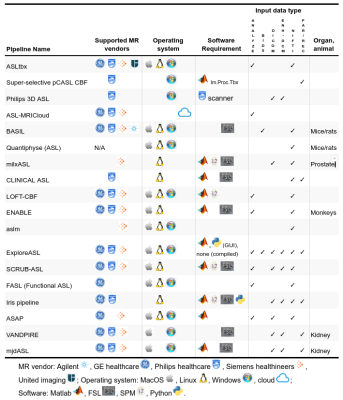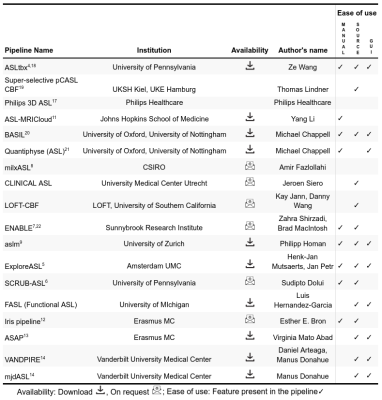Sudipto Dolui1, Hongli Fan2, Paula L. Croal3,4, Charlotte Buchanan4, Lydiane Hirschler5, Udunna Anazodo6, David L. Thomas7, Henk J.M.M. Mutsaerts8, and Jan Petr9
1Department of Radiology, University of Pennsylvania, Philadelphia, PA, United States, 2The Johns Hopkins School of Medicine, Baltimore, BC, United States, 3Radiological Sciences, Division of Clinical Neuroscience, School of Medicine, University of Nottingham, Nottingham, United Kingdom, 4Sir Peter Mansfield Imaging Centre, School of Medicine, University of Nottingham, Nottingham, United Kingdom, 5Leiden University Medical Center, Leiden, Netherlands, 6Western University, London, ON, Canada, 7UCL Queen Square Institute of Neurology, University College London, London, United Kingdom, 8Department of Radiology and Nuclear Medicine, Amsterdam University Medical Center, location VU, Amsterdam, Netherlands, 9Helmholtz-Zentrum Dresden-Rossendorf, Dresden, Germany
1Department of Radiology, University of Pennsylvania, Philadelphia, PA, United States, 2The Johns Hopkins School of Medicine, Baltimore, BC, United States, 3Radiological Sciences, Division of Clinical Neuroscience, School of Medicine, University of Nottingham, Nottingham, United Kingdom, 4Sir Peter Mansfield Imaging Centre, School of Medicine, University of Nottingham, Nottingham, United Kingdom, 5Leiden University Medical Center, Leiden, Netherlands, 6Western University, London, ON, Canada, 7UCL Queen Square Institute of Neurology, University College London, London, United Kingdom, 8Department of Radiology and Nuclear Medicine, Amsterdam University Medical Center, location VU, Amsterdam, Netherlands, 9Helmholtz-Zentrum Dresden-Rossendorf, Dresden, Germany
As a part of the Open Source Initiative for Perfusion Imaging (OSIPI), we have created an inventory of pipelines for processing of arterial spin labeling data. We listed their features and software requirements to facilitate easy access based on user’s requirements.

Table 2. Requirements. This table provides the basic requirements on the operating system, software, and data input types. It further lists the compatible vendors (note that other vendors might also work on each pipeline even though they were not tested for it). All pipelines were developed and tested to work with human brain scans. The last column lists other organs and animals that were tested.

Table 1. Contact details. This table contains the basic details about the pipeline such as the pipeline author, affiliation, and a link to a scientific publication with more details about the pipeline. Furthermore, it is indicated if the pipeline is available on request or by direct download (see TF 1.1 website15 for the links to the pipelines and author contacts). Last columns indicate if the pipeline is provided with a manual or guide, open source code, and a graphical user interface (GUI).
